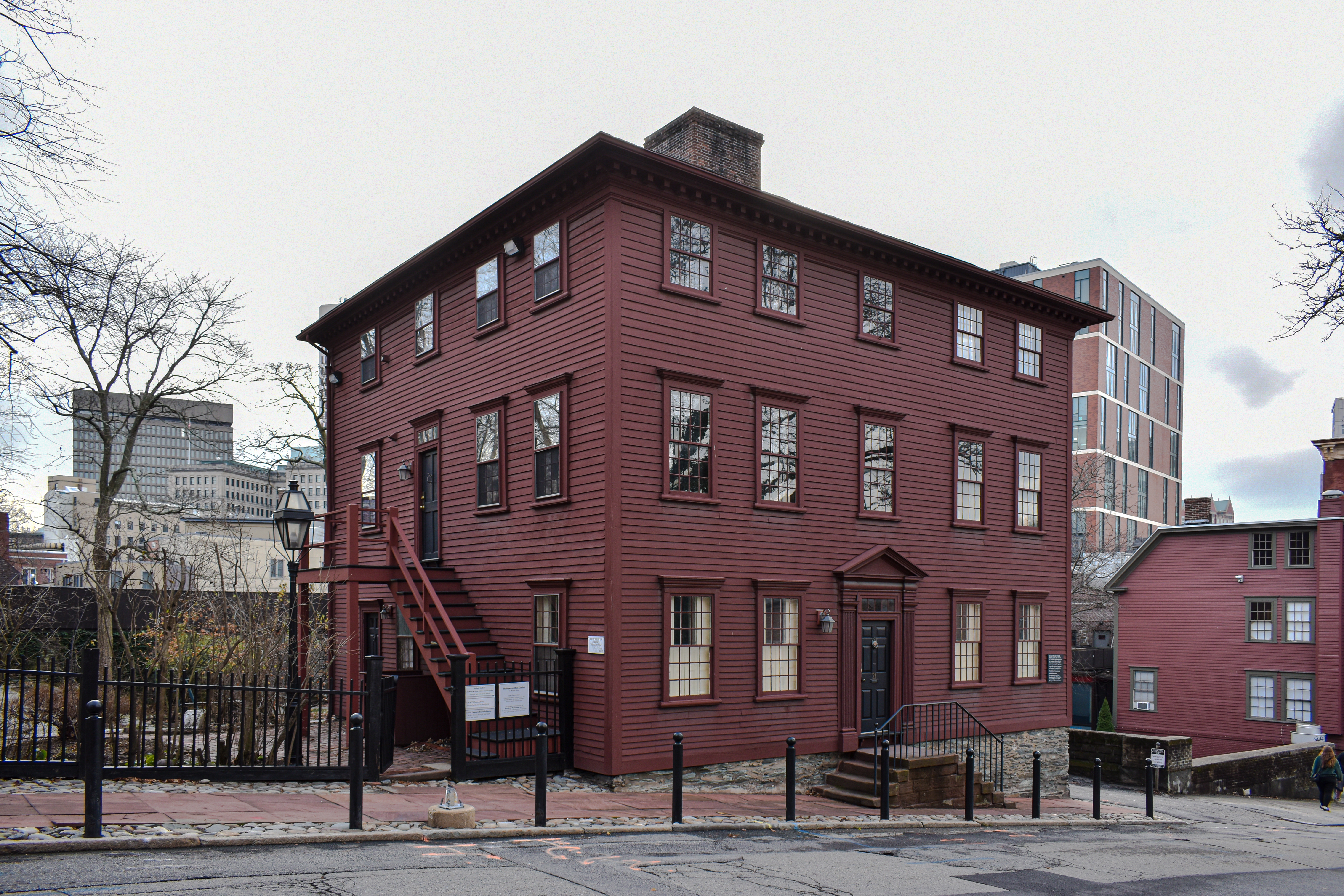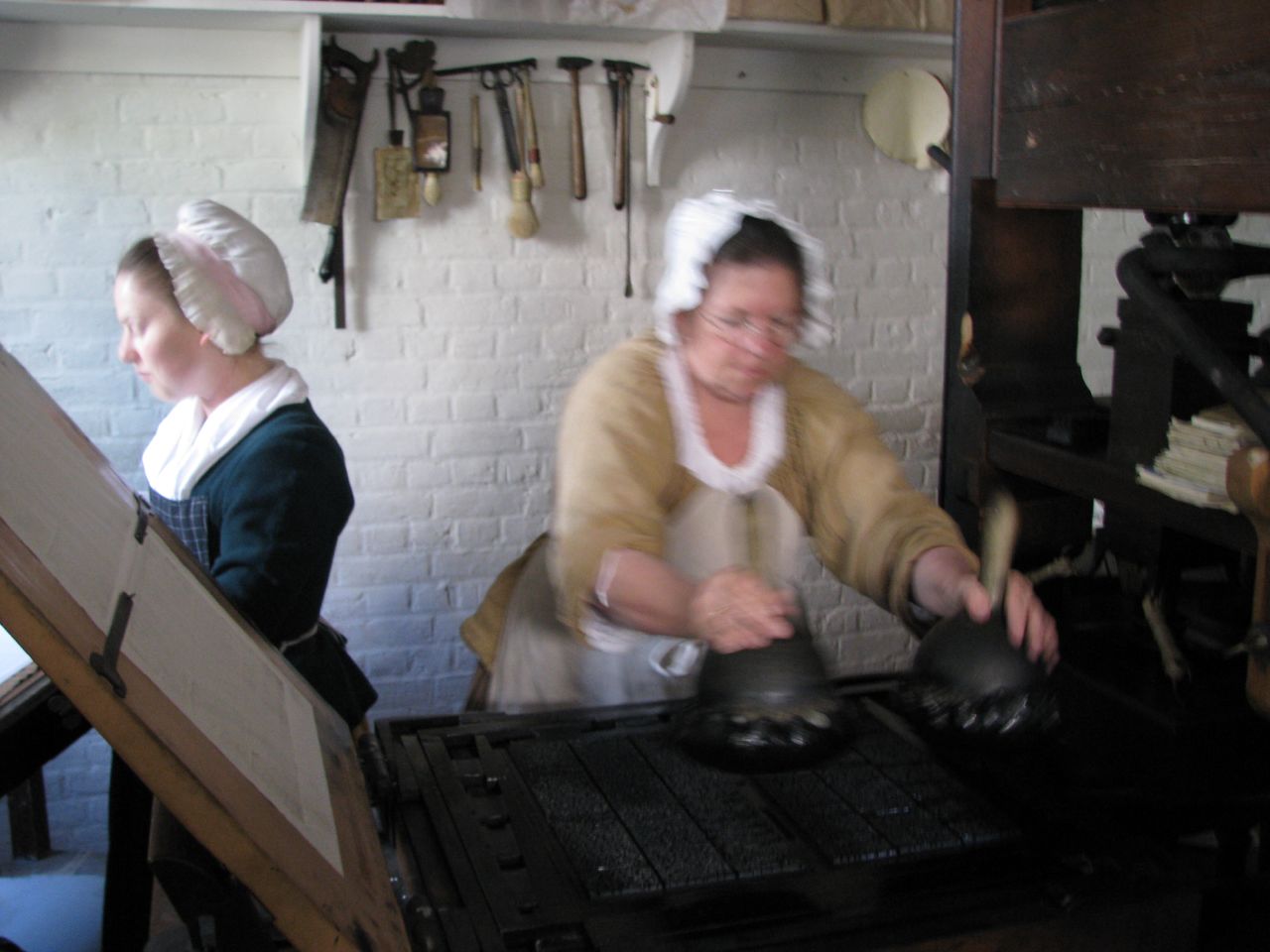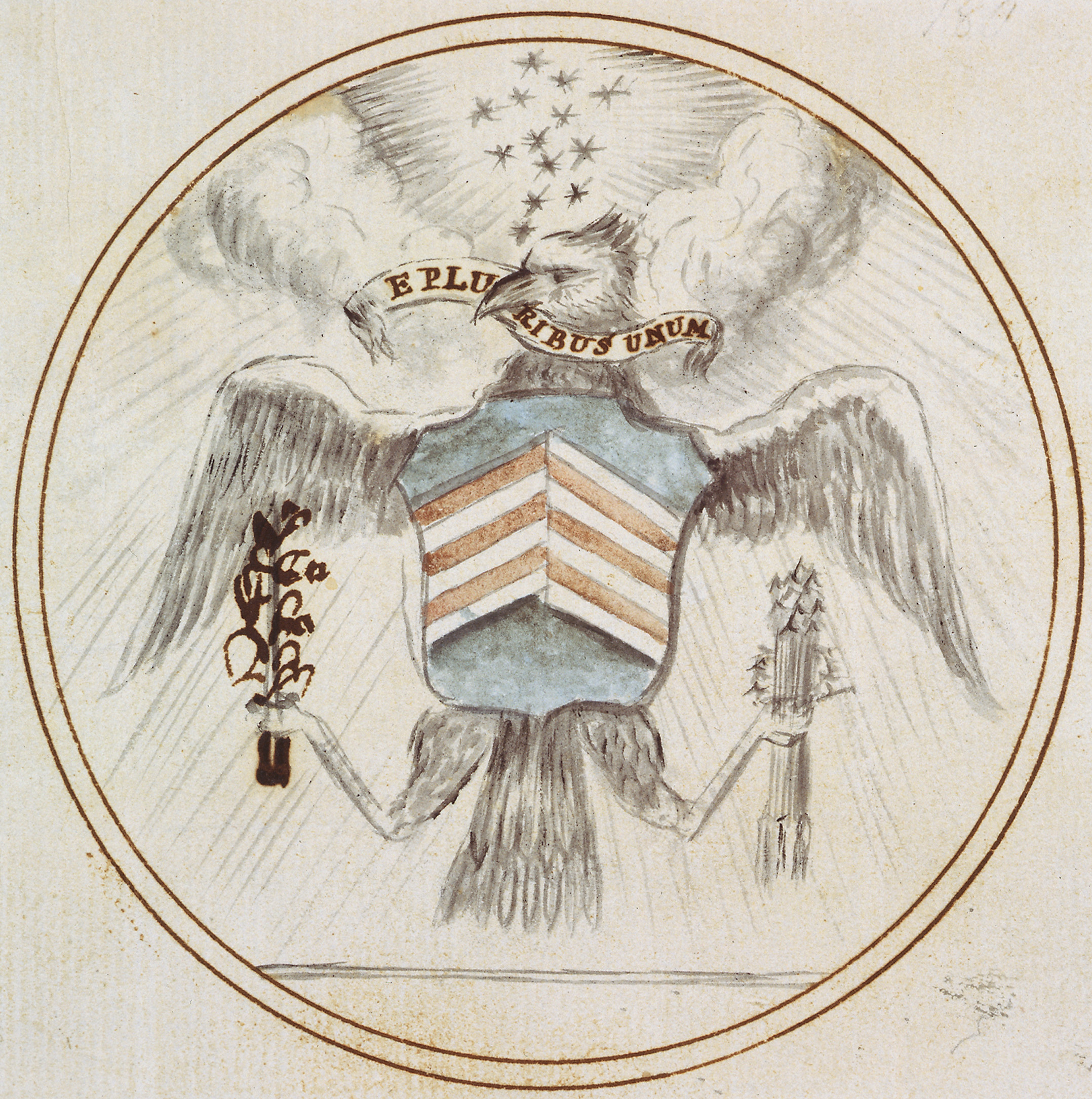|
Mary Goddard
Mary Katharine Goddard (June 16, 1738 – August 12, 1816) was an early American publisher, and the postmaster of the Baltimore Post Office from 1775 to 1789. She was the older sister of William Goddard, also a publisher and printer. She was the second printer to print the Declaration of Independence. Her copy, the Goddard Broadside, was commissioned by Congress in 1777, and was the first to include the names of the signatories. In 1998, Goddard was inducted into the Maryland Women's Hall of Fame. Early life Mary Katharine Goddard was born in Southern New England in 1738. She was the daughter of Dr. Giles Goddard and Sarah Updike Goddard. Her father was the postmaster of New London, Connecticut. Her brother, William Goddard (1740–1817), was a few years younger and had served an apprenticeship in the printing trade. Printing career The Goddard family (Mrs. Goddard, William Goddard and Mary Goddard) had set up a printing press, and were the first to publish a newspaper in ... [...More Info...] [...Related Items...] OR: [Wikipedia] [Google] [Baidu] |
Goddard Broadside
The physical history of the United States Declaration of Independence spans from its original drafting in 1776 into the discovery of historical documents in modern time. This includes a number of drafts, handwritten copies, and published broadsides. The Declaration of Independence states that the thirteen colonies were now the "United Colonies" which "are, and of Right ought to be Free and Independent States"; and were no longer a part of the British Empire. Drafts and pre-publication copies Composition Draft The earliest known draft of the Declaration of Independence is a fragment known as the "Composition Draft". The draft, written in July 1776, is in the handwriting of Thomas Jefferson, principal author of the Declaration. It was discovered in 1947 by historian Julian P. Boyd in the Jefferson papers at the Library of Congress. Boyd was examining primary documents for publication in ''The Papers of Thomas Jefferson'' when he found the document, a piece of paper that contains ... [...More Info...] [...Related Items...] OR: [Wikipedia] [Google] [Baidu] |
American Revolution
The American Revolution was an ideological and political revolution that occurred in British America between 1765 and 1791. The Americans in the Thirteen Colonies formed independent states that defeated the British in the American Revolutionary War (1775–1783), gaining independence from the British Crown and establishing the United States of America as the first nation-state founded on Enlightenment principles of liberal democracy. American colonists objected to being taxed by the Parliament of Great Britain, a body in which they had no direct representation. Before the 1760s, Britain's American colonies had enjoyed a high level of autonomy in their internal affairs, which were locally governed by colonial legislatures. During the 1760s, however, the British Parliament passed a number of acts that were intended to bring the American colonies under more direct rule from the British metropole and increasingly intertwine the economies of the colonies with those of Brit ... [...More Info...] [...Related Items...] OR: [Wikipedia] [Google] [Baidu] |
William Goddard (printer)
William Goddard (October 10, 1740 – December 23, 1817) was an early American patriot, publisher, printer and postal inspector. Born in New London, Connecticut, Goddard lived through the American Revolutionary era, during which he opposed British rule of the colonies through his actions and publications. He was a major figure in the development of the colonial postal system, which became the U.S. Post Office after the American Revolution. Goddard served as an apprentice printer under James Parker and in 1762 became an early American publisher who during his career eventually established four newspapers during the American colonial period, including the ''Pennsylvania Chronicle'', ''Pennsylvania Gazette'' and '' The Constitutional Courant,'', which frequently gave voice to the various patriotic causes. As a printer and publisher Goddard was highly critical of the Stamp Act in 1765 and joined the Sons of Liberty to that end. For a short time he was also a postmaster of Providen ... [...More Info...] [...Related Items...] OR: [Wikipedia] [Google] [Baidu] |
Pennsylvania Chronicle
The ''Pennsylvania Chronicle and Universal Advertiser'' was an American colonial newspaper founded in 1767 that was published in Philadelphia, Pennsylvania, prior to the American Revolution and was founded by William Goddard (publisher), William Goddard and his silent business partners Joseph Galloway and Thomas Wharton Jr., Thomas Wharton. Benjamin Franklin, an associate of Galloway, was also a partner with the ''Chronicle''. The newspaper was established to challenge the power of the Penn family and ultimately the Crown authorities who at that time were placing laws and taxes on the colonists without fair representation in the Parliament of the United Kingdom, British Parliament. The ''Chronicle'' was published once a week on a Monday, the first issue being released on January 6, 1767, and was printed from a new ''Bourgeois type set'' by Goddard's printing company in Philadelphia, ''The New Printing Office'', on Market-Street, near the Post-Office. The annual subscription rate ... [...More Info...] [...Related Items...] OR: [Wikipedia] [Google] [Baidu] |
List Of Women Printers And Publishers Before 1800
The list of women printers and publishers before 1800 include women active as printers or publishers prior to the 19th century. Before the printing press was invented, books were made from pages written by scribes, and it could take up to a year or two for a book to be completed. Books were a luxury mainly for religious scholars and the upper class. Johannes Guttenberg invented the printing press around 1450, which allowed for mass production of books. Having books become more widely available meant that the masses had access to information that they might not get otherwise, but threatened the authority of the state. Some printers had their works censored and may have been jailed for disseminating information of which the state did not approve. Printing required setting type, which could be arduous, and running the press, which was heavy, as well as bookbinding. Although running the press was considered too physically difficult, many women were able to do all the jobs required t ... [...More Info...] [...Related Items...] OR: [Wikipedia] [Google] [Baidu] |
National Postal Museum
The National Postal Museum, located opposite Union Station in Washington, D.C., United States, covers large portions of the Postal history of the United States and other countries. It was established through joint agreement between the United States Postal Service and the Smithsonian Institution and opened in 1993. Premises The museum is located across the street from Union Station, in the building that served as the main post office of Washington, D.C. for decades, from its construction in 1914 until 1986. The building was designed by the Graham and Burnham architectural firm, which was led by Ernest Graham following the death of Daniel Burnham in 1912. The headquarters of the United States Department of Labor's Bureau of Labor Statistics is based in this building, and there is also space for a data center for the United States Senate. Displays The museum holds the National Philatelic Collection. It has hosted many interactive displays about the history of the United Stat ... [...More Info...] [...Related Items...] OR: [Wikipedia] [Google] [Baidu] |
Samuel Osgood
Samuel Osgood (February 3, 1747 – August 12, 1813) was an American merchant and statesman born in Andover, Massachusetts, currently a part of North Andover, Massachusetts. His family home still stands at 440 Osgood Street in North Andover and his home in New York City, the Samuel Osgood House, served as the country's first Presidential mansion. He served in the Massachusetts and New York State legislatures, represented Massachusetts in the Continental Congress and was the fourth Postmaster General of the United States (the first under the current Constitution), serving during George Washington's first term. In 1812, he was elected the first president of the newly formed City Bank of New York, which later became Citibank, predecessor of today's Citigroup. Early life John Osgood came to Massachusetts from Andover in England in 1638. In 1646 he started a new settlement there and named it Andover for his home town. Four generations later, Captain Peter Osgood lived there and ... [...More Info...] [...Related Items...] OR: [Wikipedia] [Google] [Baidu] |
Charles Thomson
Charles Thomson (November 29, 1729 – August 16, 1824) was an Irish-born Patriot leader in Philadelphia during the American Revolution and the secretary of the Continental Congress (1774–1789) throughout its existence. As secretary, Thomson, a Founding Father of the United States, prepared the Journals of the Continental Congress, and his and John Hancock's names were the only two to appear on the first printing of the United States Declaration of Independence. Thomson is also known for co-designing the Great Seal of the United States and adding its Latin mottoes ''Annuit cœptis'' and ''Novus ordo seclorum'', and for his translation of the Bible's Old Testament. Early life Thomson was born in Maghera, County Londonderry, Ireland, to Scots-Irish migrants, Mr. and Mrs. John Thomson. After the death of his wife in 1739, John Thomson migrated to the British colonies in North America with his sons (three or four brothers, including Charles). John Thomson died at sea, hi ... [...More Info...] [...Related Items...] OR: [Wikipedia] [Google] [Baidu] |
John Hancock
John Hancock ( – October 8, 1793) was an American Founding Father, merchant, statesman, and prominent Patriot of the American Revolution. He served as president of the Second Continental Congress and was the first and third Governor of the Commonwealth of Massachusetts. He is remembered for his large and stylish signature on the United States Declaration of Independence, so much so that the term ''John Hancock'' or ''Hancock'' has become a nickname in the United States for one's signature. He also signed the Articles of Confederation, and used his influence to ensure that Massachusetts ratified the United States Constitution in 1788. Before the American Revolution, Hancock was one of the wealthiest men in the Thirteen Colonies, having inherited a profitable mercantile business from his uncle. He began his political career in Boston as a protégé of Samuel Adams, an influential local politician, though the two men later became estranged. Hancock used his wealth to support t ... [...More Info...] [...Related Items...] OR: [Wikipedia] [Google] [Baidu] |
Treason
Treason is the crime of attacking a state authority to which one owes allegiance. This typically includes acts such as participating in a war against one's native country, attempting to overthrow its government, spying on its military, its diplomats, or its secret services for a hostile and foreign power, or attempting to kill its head of state. A person who commits treason is known in law as a traitor. Historically, in common law countries, treason also covered the murder of specific social superiors, such as the murder of a husband by his wife or that of a master by his servant. Treason (i.e. disloyalty) against one's monarch was known as ''high treason'' and treason against a lesser superior was ''petty treason''. As jurisdictions around the world abolished petty treason, "treason" came to refer to what was historically known as high treason. At times, the term ''traitor'' has been used as a political epithet, regardless of any verifiable treasonable action. In a civil war or ... [...More Info...] [...Related Items...] OR: [Wikipedia] [Google] [Baidu] |
Printing Press
A printing press is a mechanical device for applying pressure to an inked surface resting upon a printing, print medium (such as paper or cloth), thereby transferring the ink. It marked a dramatic improvement on earlier printing methods in which the cloth, paper or other medium was brushed or rubbed repeatedly to achieve the transfer of ink, and accelerated the process. Typically used for texts, the invention and global spread of the printing press was one of the most influential events in the second millennium. In Germany, around 1440, goldsmith Johannes Gutenberg invented the movable-type printing press, which started the Printing Revolution. Modelled on the design of existing screw presses, a single Renaissance movable-type printing press could produce up to 3,600 pages per workday, compared to forty by History of typography in East Asia, hand-printing and a few by scribe, hand-copying. Gutenberg's newly devised matrix (printing), hand mould made possible the precise and ra ... [...More Info...] [...Related Items...] OR: [Wikipedia] [Google] [Baidu] |
United States Declaration Of Independence
The United States Declaration of Independence, formally The unanimous Declaration of the thirteen States of America, is the pronouncement and founding document adopted by the Second Continental Congress meeting at Pennsylvania State House (later renamed Independence Hall) in Philadelphia, Pennsylvania, on July 4, 1776. Enacted during the American Revolution, the Declaration explains why the Thirteen Colonies at war with the Kingdom of Great Britain regarded themselves as thirteen independent sovereign states, no longer subject to British colonial rule. With the Declaration, these new states took a collective first step in forming the United States of America and, de facto, formalized the American Revolutionary War, which had been ongoing since April 1775. The Declaration of Independence was signed by 56 of America's Founding Fathers, congressional representatives from New Hampshire, Massachusetts Bay, Rhode Island and Providence Plantations, Connecticut, New York, New Jer ... [...More Info...] [...Related Items...] OR: [Wikipedia] [Google] [Baidu] |









(cropped).jpg)